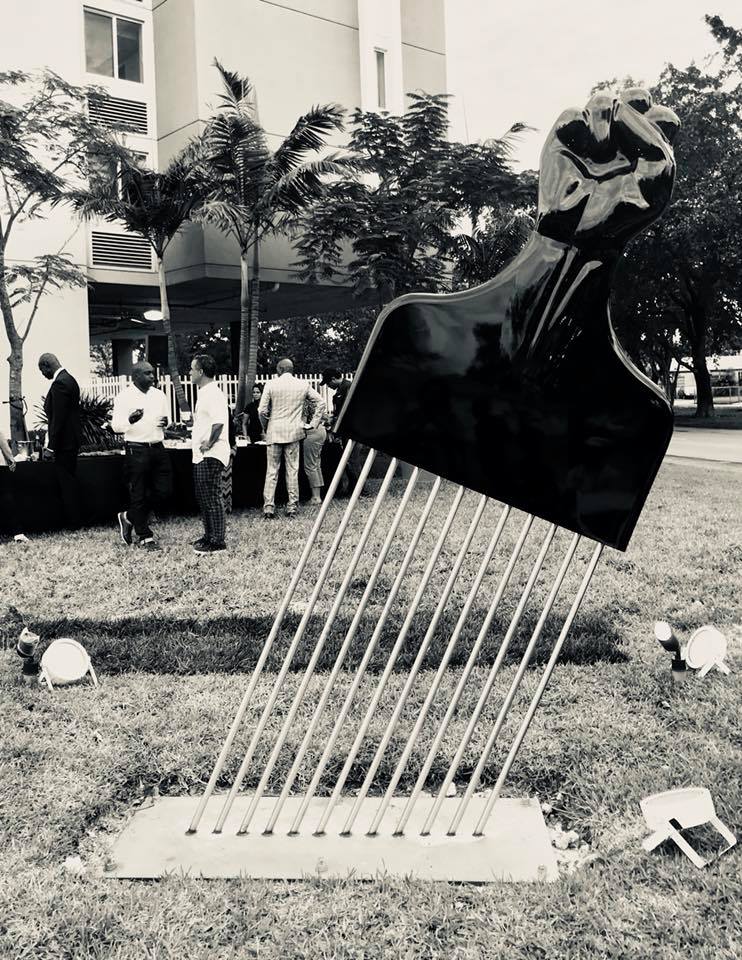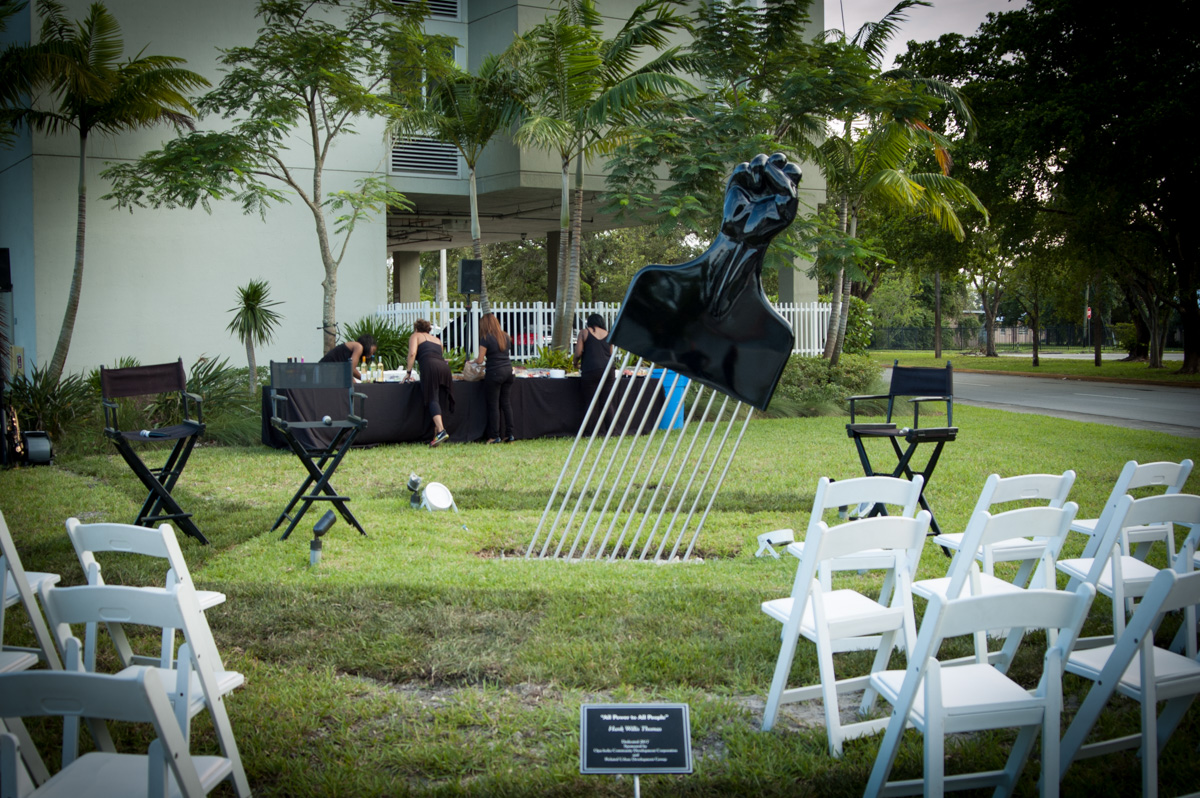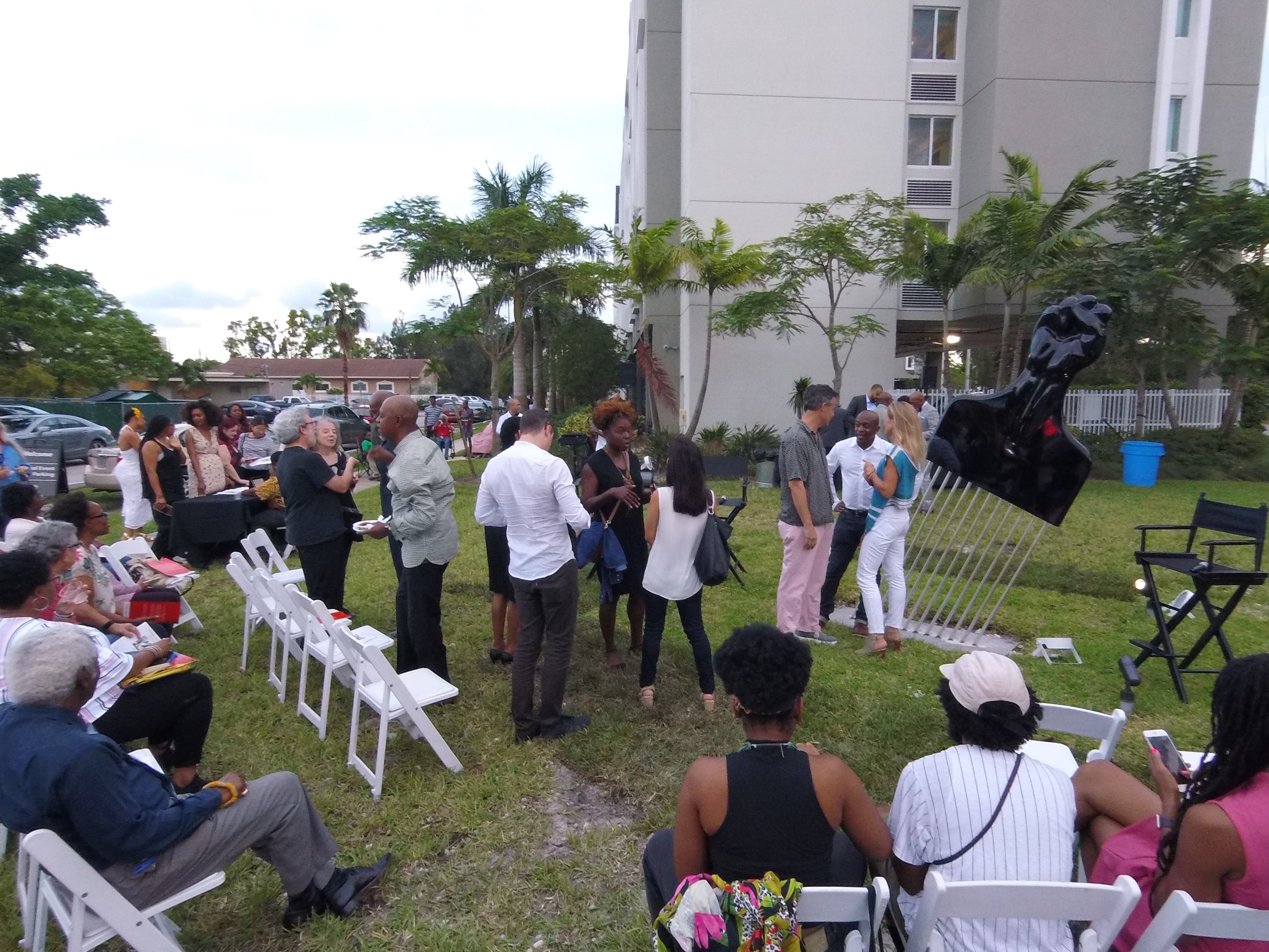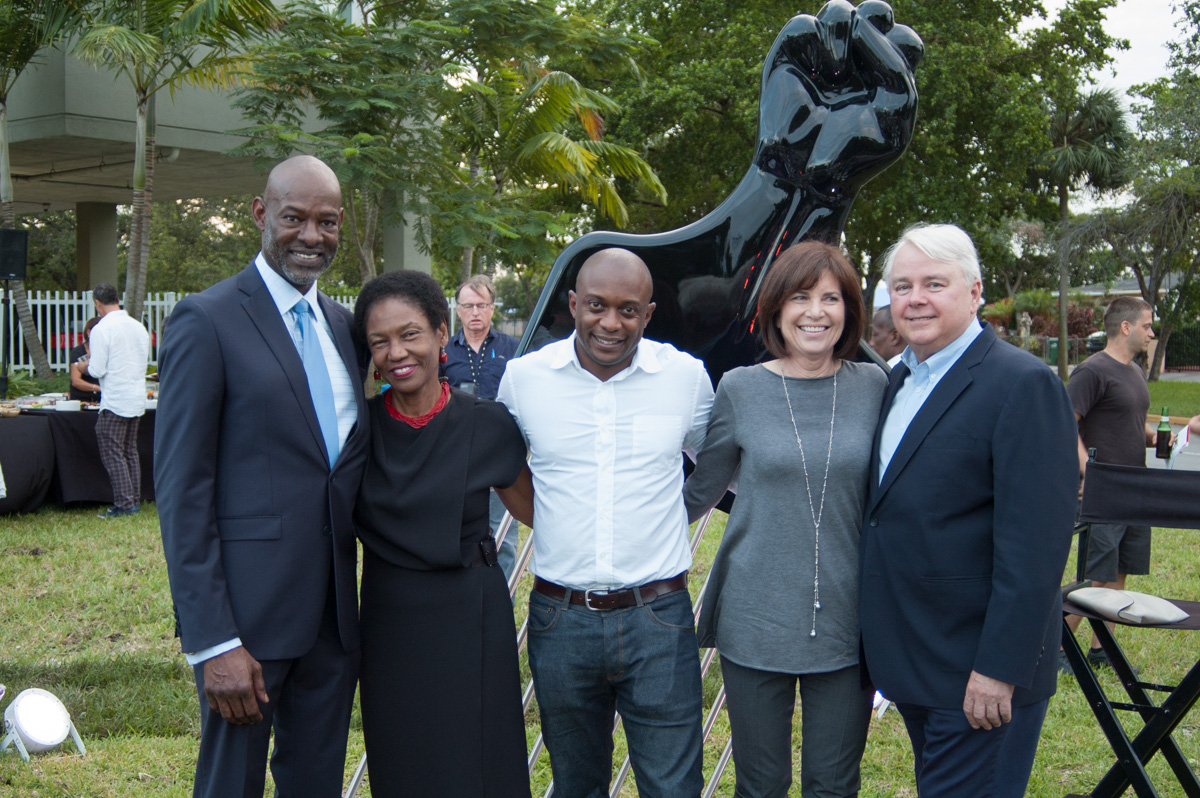
Above: Hank Willis Thomas Afro Pick in Opa-Locka, FL. (photo: Adrienne Chadwick)
Opa-Locka’s Town Center Apartments, 420 Aladdin Street, is the site of a new art-in-public places sculpture. The artwork by Hank Willis Thomas is called “All Power to All People” — sculpted like an afro pick hair comb. It is deceptively simple but is part of Thomas’s body of work and indeed, his continuing conversation that asks many questions. Questions, good ones like his, are not easy to answer though some may think otherwise.
The “afro pick” sculpture with a clenched fist atop it seems familiar and yet a bit remote in time as well. This “simple” artwork is very layered with history and situated inside and outside its immediate context of Opa-Locka, which has wonderful neighborhoods with excellent and unique architecture. The city has been rocked recently by political scandal but has had consistent art programming over the past several years (which is a topic for a different essay).
The raised fist salute consists of raising one arm in the air with a clenched fist. The meaning can vary based on context. Different movements sometimes use different terms to describe the raised fist salute: amongst communists and socialists, it is sometimes called the red salute, whereas amongst some African-American activists, especially in the United States it has been named the Black Power salute. During the Spanish Civil War, it was sometimes known as the anti-fascist salute. (Wikipedia)


New York artist Hank Willis Thomas new artwork, ‘All Power to All People,’ at Town Center Apartments in Opa-Locka. (photo: Onajide Shabaka)
When asked about the motivation for the sculpture Hank Willis Thomas mentioned Claes Oldenburg and his oversized recreations of ordinary and everyday objects one finds in ones living environment. Naturally, one would expect to see such an object as an afro pick in the home of an African American that came of age during the 60s and 70s; a time of natural hairstyles and big blown out “afros.” Natural hairstyles seem to have taken a backseat to the weaves, wigs, and various methods of hair straightening used today in the US. The reflection of a specific population in the sculpture is undoubted significance in Opa-Locka, and not to be understated.
Since the fist is a stylistic reflection of a real comb, it is black in color. As can be expected, in this specific case the raised, clenched fist might evoke the Black Panthers, whose community social programs became a core activity of party members (even if one doesn’t remember that to be the case).
“All Power to All People,” the sculpture’s title reflects that artist’s inclusive humanitarian outlook. This remains a consistent approach is his creative practice while he has been called “one of America’s most outspoken artists,” by the Guardian UK news organization. Thomas says, “I can see the pick is provocative – but you hope every work you make is provocative.”
A raised fist was used as a logo by the Industrial Workers of the World in 1917. The graphic symbol was popularized in 1948 by Taller de Gráfica Popular, a print shop in Mexico that used art to advance revolutionary social causes. The symbol has been picked up and incorporated around the world by various oppressed groups. In 2015 it emerged in the southeast area of Ukraine among the separatists battling the Ukraine Kiev government forces, along with the phrase “¡No Pasarán!”. (Wikipedia)
“There’s no nuance in politics,” says Thomas to the Guardian. “And the people who try to have a nuanced conversation are normally seen as trying to be intellectuals. So I think simple arguments lead to simple solutions.”

New York artist Hank Willis Thomas speaks Oct. 17, 2017, at the dedication of his new artwork, ‘All Power to All People,’ at Town Center Apartments in Opa-Locka. (Lf. to Rt.: Willie Logan, Marilyn Holifield, Hank Willis Thomas, Debra Scholl, Dennis Scholl) (photo: Onajide Shabaka)
Hank Willis Thomas has longstanding relationships in South Florida being in exhibitions and collections, having lectured and visited on numerous occasions. Some of the local Opa-Locka residents who attended the dedication service voiced their approval of his installation.
